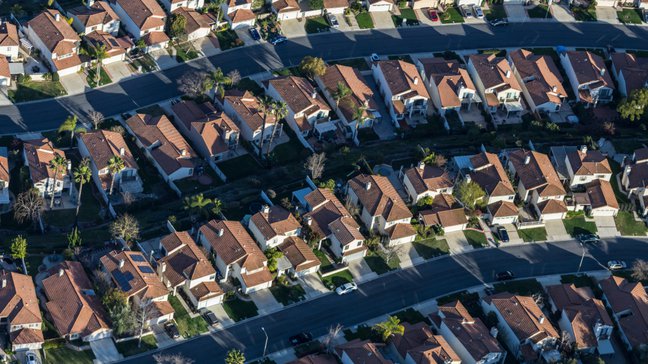Source: Giphy.com
When you hear the term “middle class” what do you think of? If you’re like most people, you probably think of someone with a comfortable average income – not too rich, but not too poor either.
But what does “middle class” really mean? And how has the definition changed over time?
What is considered middle class?
Believe it or not, there is no universal definition of the middle class.
- Economists tend to look exclusively at household income or wealth.
- Sociologists look at education and diplomas.
- Philosophers tend to prioritize culture and values.
In fact, whether you are middle class probably depends on a combination of your income, experience, and cultural values. But before we get into that, let’s first look at some technical definitions.
Pew Research definition of the middle class
Pew Research defines the middle class as those who earn two-thirds to double the median household income.
The median household income in the US is currently $67,521, according to the latest Census data. So, by Pew’s definition, the middle class is anyone who earns between $45,014 and $135,042.
I wonder if you’re from the middle class? Use the Pew Income Calculator to find out.
Definition of the Brookings Institution
The Brookings Institution defines the middle class as people who make up the middle 60% of households (or the middle three quintiles) on the income ladder. This means you are in the middle class if your household income drops from $39,479 to $109,732, according to the latest census data.
This range is a bit narrower than Pew Research’s range, but it still leaves a fairly large gap in who is considered middle class and who is not.
Definition of city institution
The Urban Development Institute defines a middle-class family as a family whose annual household income is 150-500% above the poverty line. The poverty line for a family of three in 2020 was $21,720. Thus, the middle class is those who earn between $32,580 and $108,600.
Short review
This table gives an overview of the comparison of all three definitions of the middle class:
| Who is considered the “middle class” in America? | |
|---|---|
| Pew Research Definition | from 45,014 to 135,042 USD |
| Definition of the Brookings Institution | from $39,479 to $109,732 |
| Definition of city institution | $32,580 to $108,600 |
As you can see, all three definitions give a fairly large gap between the lower and upper middle class.
And it’s safe to say that someone who makes $30,000 or $45,000 a year is likely to disagree that their financial difficulties are the same as those who earn three times as much as they do.
Read more: Wealth does not equal income – how to feel richer than someone who earns twice as much
So how else can we define the middle class? It turns out that this may have more to do with your monetary values and goals than it does with your actual income. Let’s take a look.
Characteristics of middle class families

Source: Giphy.com
Beyond these technical definitions, many scholars believe that middle-class families share a few common lifestyle goals that tie them all together.
For example, many middle-class families aspire to the American dream. They want:
- Own house or car.
- Pay their bills on time.
- Have enough money to save for retirement.
- Send your kids to college, even if it means taking out loans.
- Have enough money to afford the occasional vacation.
Based on these characteristics, the middle class can be defined more as a state of being than a household income. And if you also have the drive to achieve the American Dream, you may very well be in the middle class.
Read more: Why so many people are poor at home and how to avoid the same fate
How the middle class varies by location

Source: Giphy.com
Geography also plays a huge role in defining the middle class. After all, the cost of living can go a long way in determining how “rich” or “poor” you feel at any given salary.
In some parts of the country, $40,000 goes a lot further than in others. In low-cost cities like Fort Wayne, Indiana or Topeka, Kansas, you can easily survive (or thrive) on that income.
But in expensive places like San Francisco or New York, this may not even be enough to pay rent. (A studio apartment in New York costs an average of $3,638—that’s over $40,000 a year!)
How the middle class has changed over the decades

Source: Giphy.com
Income is often used as a way to measure class, and in that sense, the middle class today is very different from what it was even a few decades ago.
In 1970, the average middle-income family earned about $60,000 (in constant 2020 dollars), according to Pew Research. Today, that figure has increased to $90,000.
But even as incomes rose, so did the cost of living.
- Medicine is more expensive.
- College tuition prices have skyrocketed.
- Products and the cost of goods have increased.
- Pensions are gone.
All of these factors mean that in many ways the middle class is struggling more than ever before.
Read more: Cost of health insurance – is it worth it?
Why the middle class is shrinking
In recent years, the middle class has been shrinking due to a number of factors, including globalization, technological change, and rising costs of living. And, of course, all these factors have been exacerbated by the coronavirus pandemic.
- Globalization: Jobs that once belonged to the middle class, such as manufacturing jobs, have been outsourced to other countries where labor is cheaper.
- Technology: Jobs that were once considered middle class, such as data entry, farming and accounting, can now be done by fewer people thanks to automation and computers.
- Rising cost of living: The cost of housing, healthcare, and education has risen faster than people’s incomes. This made it difficult for middle-class families to keep up with inflation and the rising cost of living.
Read more: Inflation is on the rise – here are 7 tips to protect your finances from it
Summary
There are several technical definitions of the middle class, but whether you fall into this economic hierarchy may have more to do with your location, dreams, and goals than your income.
Featured image: trekandshoot/Shutterstock.com


